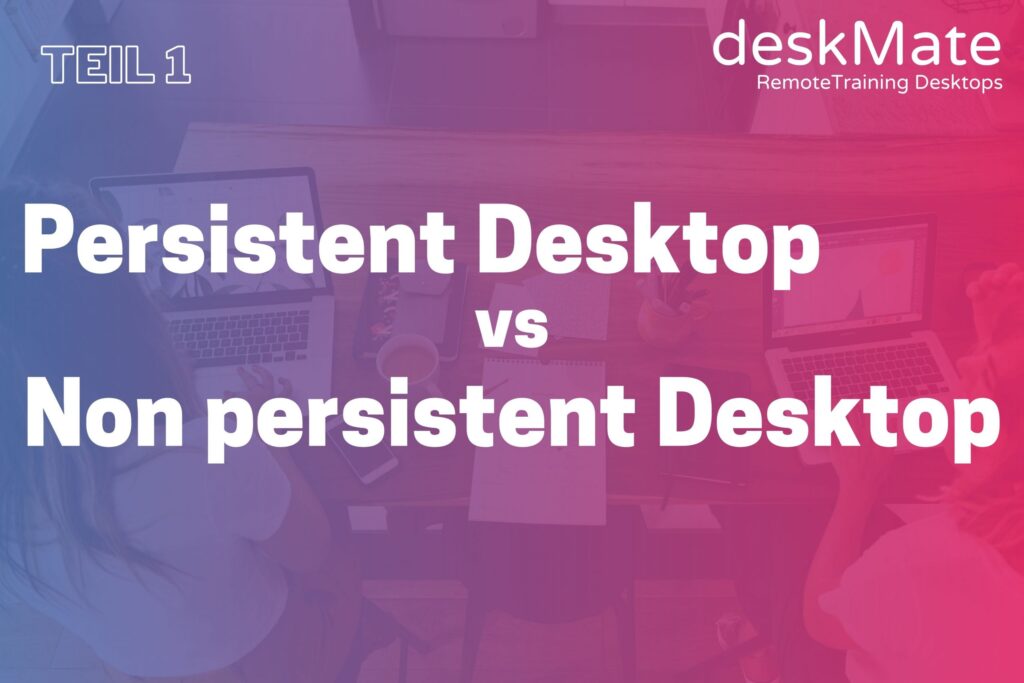Persistent versus non-persistent desktop – Part 1

As a training company, you are familiar with the terms Master Desktop and Pool Desktop. Many people also know that a master desktop is a persistent desktop and a pool desktop is a non-persistent desktop. But what exactly are the differences?
In part 1 we deal with the persistent desktop
Persistent desktops (master desktops) are comparable to regular PCs/notebooks. Data can be saved, the desktop can be shut down and switched off. The saved data is available again when the device is switched back on.
Once created, persistent desktops are billed monthly regardless of whether they have been started or not.
Persistent desktops can be assigned an IP address via the operating system. They are therefore also ideal as e.g. license servers, database servers, file servers, …..

A persistent desktop can also be used for training. We recommend this if training courses last longer than 4 weeks. As described above, data can be saved persistently and the desktop can also be switched off during training. Resetting a persistent training desktop is similar to the process for physical training computers. Unlike with pool desktops, this process must be initiated manually. A persistent desktop must be provided for each training participant in advance of the training.
With the new Copy function, the hard disk image of a persistent desktop can be copied to other persistent desktops or even to pool desktops.
The image of a persistent desktop can be saved as a template and restored at a later time.

Price-sensitive customers delete the persistent master desktop after copying the image to the pool and after creating a template. After the start of a new calendar month, only the pool desktops are calculated. If the pool image is changed, a new persistent master desktop is created and the existing template is restored. This is then copied to the pool, a template is created and the persistent master desktop is deleted again.
Next time we will explain the non-persistent desktop (pool desktop) in part 2.
